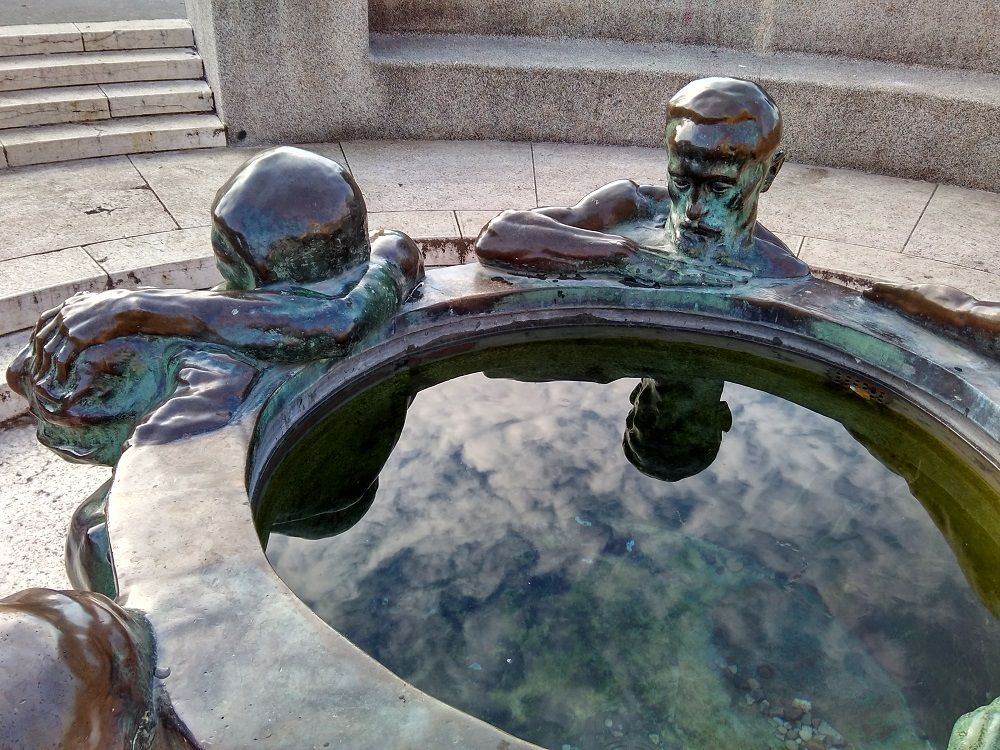If you ever stopped to admire the Croatian National Theatre, you may have noticed the sculpture in front of the building, a bronze marvel surrounded by circular walls shielding it from passerby glances.
The sculpture is called The Well of Life (Zdenac života, also known as the Fountain of Life) and was made by sculptor Ivan Meštrović in 1905. As Meštrović was recognized as an extraordinary artist since the early days of his career, the work was first showcased in 1906 at the Spring Exhibition of the Vienna Secession. It wasn’t installed in its current location until 1912, when the Minister of Education and Religion Izidor Kršnjavi advocated for its permanent display in public.
A continuous line of human figures envelops the cylindrical pool in the centre. There are ten nude figures in total, ranging in age from a small child to an old man. Most of them are paired into embracing couples or otherwise communicating characters, the only individual standing out being the elder who is pensively gazing at his reflection on the surface.

Simply put, the sculpture represents the circle of life – the natural process of aging whose wonders and troubles are recognized in the expressions of intertwined bronze figures. Meštrović was a master of conveying emotion through sculpture to such a degree that one doesn’t even need to see the faces of his sculpted subjects to understand the sentiment beneath. The figures are posed in a way that makes it impossible to discern where the line begins and where it ends – every angle can be a starting point, and the smoothly bending surface of the piece will have your gaze gliding over the figures, making you walk around to admire the details.
Even though Meštrović sculpted the well at the beginning of his career, it remains one of his best works and a masterpiece of Croatian sculpture. The Well of Life is more than a hundred years old, but owing to the humanity of its concept, it hasn’t aged a day.









